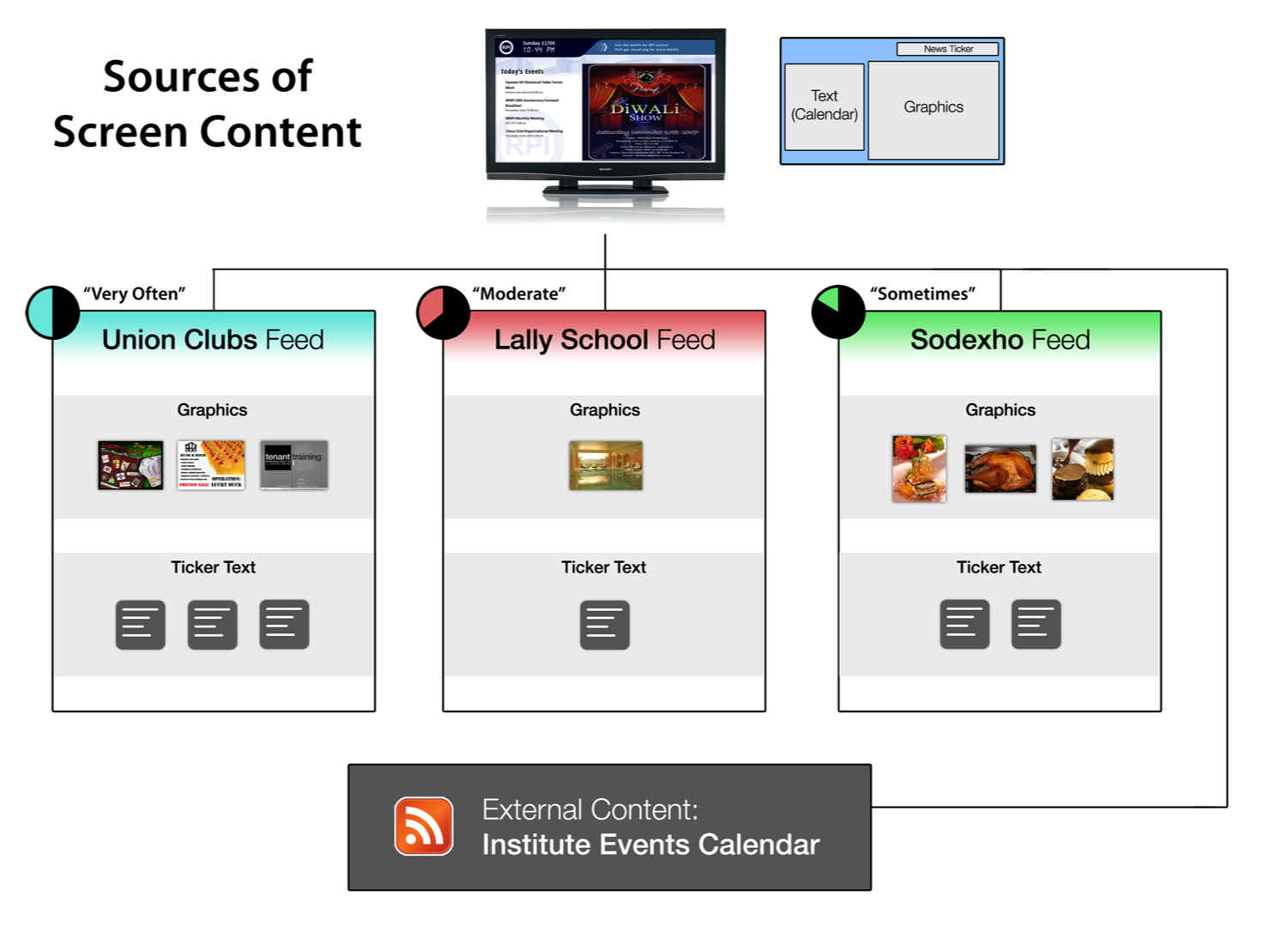Concerto accepts graphical and textual content for display on screens, and it does that well. But Concerto is capable of much more than just uploading poster graphics and displaying them on televisions. Concerto can draw from any network-connected resource to add diversity and value to a screen. Whether it's internal sources of graphics and schedules, or a universe of RSS feeds and Internet sources, Concerto powerfully remixes all of it to add value to the content it displays.
Why not just my HR posters?
Concerto's design recognizes that signage is more than a few announcements created centrally and broadcast to televisions. Concerto is the graphical expression of connected groups of people. It's posters and help desk tickets, room schedules and videos, slideshows and news, videos and sales figures.
As needed, each screen can have a unique theme, different content, and different feeds to add value to that content and engage the people around it. For screens, as for real estate, location is everything. A fleet of televisions broadcasting identical content indiscriminately adds little value to an audience wandering around with smart phones. Viewers need relevant, location-based, and empowering information on the media they see.
How it's done
Concerto's remixing comes into play when a screen owner chooses fields for a screen's graphical template. A template will tend to have a graphical field, a ticker field, and a text field. Each of those can be populated from an appropriate type of feed.
When the screen owner chooses feeds for each field, Concerto offers a slider to choose the frequency with which the feed will have its contents displayed on the screen. With each field being subscribed to feeds with various frequencies, the content displayed on the screen itself is diverse and engaging, adding value far beyond the content uploaded for that screen in particular.